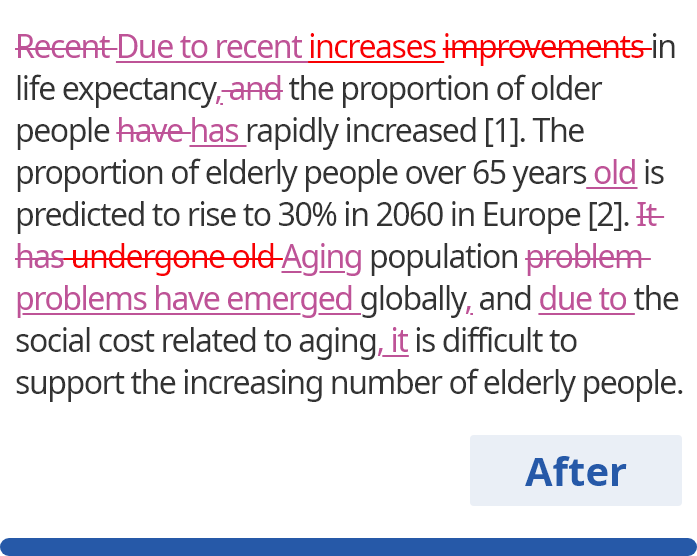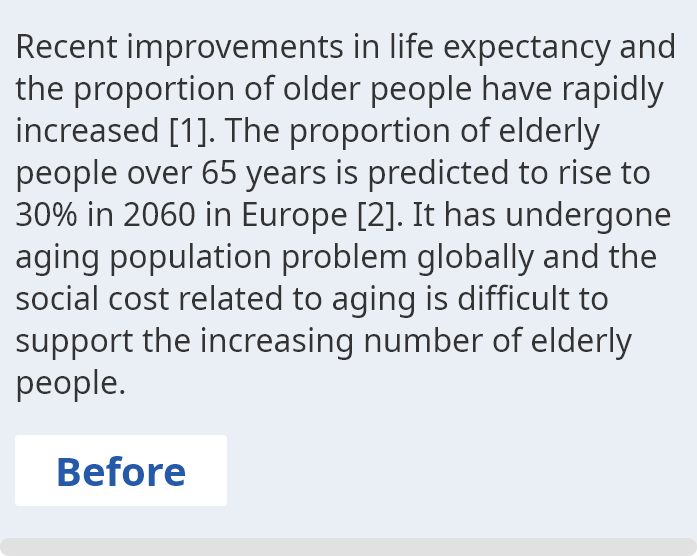Rules for Using Conjunctions
A conjunction is a word that joins words, phrases, or clauses. Some of the most commonly used conjunctions are and, but, and or. There are three types of conjunctions: coordinating conjunctions, subordinating conjunctions, and correlative conjunctions.
Types of conjunctions
| Conjunction type | What these conjunctions do | Conjunction examples |
|---|---|---|
|
Coordinating conjunctions |
Connect items that are grammatically equal |
for, and, nor, but, or, yet, so |
|
Subordinating conjunctions |
Introduce a dependent clause |
because, if, although, since, until, and while |
|
Correlative conjunctions |
Come in pairs and join grammatically equal elements |
either/or, neither/nor, not only/ but also |
Coordinating Conjunctions
Coordinating conjunctions join words, phrases, and clauses that are of equal value or meaning. Some of the most commonly used coordinating conjunctions are for, and, nor, but, or, yet, and so. Memorize the seven coordinating conjunctions by keeping in mind the mnemonic F.A.N.B.O.Y.S. (again: for, and, nor, but, or, yet, and so).
- Example
- This study investigates the effects of Drug A and the placebo on the patients.
- Example
- You can choose to take the test or write an essay to pass the class.
When joining two independent clauses with a coordinating conjunction, a comma should be used before the coordinating conjunction.
- Example
- She was unhappy with the test results, yet she refused to take the test again.
- Example
- I have only been here for one week, so I know practically nothing.
- Incorrect
- You should invite Mary, and Jane to the party.
- Correct
- You should invite Mary and Jane to the party.
Subordinating Conjunctions
Subordinating conjunctions join a subordinate clause to a main clause. Subordinating conjunctions can be used to show a cause-and-effect relationship, a contrast, a transition in time or place, or a conditional relationship. Some of the most commonly used subordinating conjunctions are after, although, before, even though, if, in case, till, whenever, unless, and while.
Showing a cause-and-effect relationship
Subordinating conjunctions that signal cause-and-effect relationships are because, since, as, due to, and as if.
- Example
- I could not go to class because I did not feel good.
- Example
- Due to his poor attendance, the professor had to fail him.
Highlighting a contrast
Subordinating conjunctions that signal contrast are although, though, whether, while, and even though.
- Example
- While she plans to go to Paris for spring break, he plans to go to Tokyo.
- Example
- Although he is much younger than me, he is much smarter than most of my classmates.
Indicating a conditional relationship
Subordinating conjunctions that signal conditional relationships are if and unless.
- Example
- Unless you leave now, you will be late.
- Example
- If he decides to take the offer, he will have to move out soon.
Showing transitions in time or place
Subordinating conjunctions that signal transitions in time or place are where, everywhere, after, until, as soon as, and before.
- Example
- Don't forget to clean your room as soon as you get home.
- Example
- This is the place where I grew up.
Correlative Conjunctions
Correlative conjunctions are pairs of words used to connect two parts of a sentence or that correlate with one another. Some of the most commonly used correlative conjunctions are either/or, neither/nor, and not only/but also.
Typically, when a set of conjunctions is used in a sentence, they do not need to be separated from each other by a comma.
- Incorrect
- I will either have a sandwich, or salad for lunch.
- Correct
- I will either have a sandwich or salad for lunch.
- Incorrect
- Neither the boy, nor his brother want to help their mother.
- Correct
- Neither the boy nor his brother want to help their mother.
However, when a correlative conjunction such as not only/but also is used to separate two independent clauses, a comma should be used before the conjunction.
- Incorrect
- Not only did she start playing the piano at a very young age but her mother also taught her to compose music.
- Correct
- Not only did she start playing the piano at a very young age, but her mother also taught her to compose music.
Starting a Sentence with a Conjunction
It is often said that starting a sentence with a conjunction is not “grammatically correct.” However, while it is not recommended to begin too many sentences with conjunctions (especially in academic writing), starting a sentence with a conjunction is acceptable when done sparingly or used for poetic effect.
- Example
- She wanted to go home. But he did not want to.
- Example
- Although I do not like the restaurant, I will go if you want me to.
- Example
- Either this dress or that pair of pants is fine.
Rules for Using Commas with Conjunctions
The rule for using commas with conjunctions is pretty simple regardless of the types of conjunctions being used. When a conjunction is used to connect two independent clauses, a comma should be used before the conjunction.
- Example
- The professor explained the assignment in detail, but the students did not seem to understand it.
- Example
- The weather is nice, but I don't think we should go on the picnic.
However, when a conjunction is used to connect an independent clause to a dependent clause, a comma should not be used.
- Incorrect
- The professor explained the assignment in detail, and gave out the workbook.
- Correct
- The professor explained the assignment in detail and gave out the workbook.
- Incorrect
- The weather is nice, but a little bit chilly.
- Correct
- The weather is nice but a little bit chilly.
However, there is an exception to using a comma to connect two independent clauses. If the two independent clauses that are being linked by a conjunction are very short, it is okay to leave out a comma before the conjunction.
- Incorrect
- I cooked, and he cleaned.
- Correct
- I cooked and he cleaned.
Regarding conjunctions, a comma is used after introductory clauses, phrases, or words that come before the main clause. Conjunctions that are commonly used as introductory words or in introductory clauses include after, although, as, if since, when, and while.
- Example
- While I do my homework, you go do the dishes.
- Example
- If you do not want to go to the party, you can stay home.












